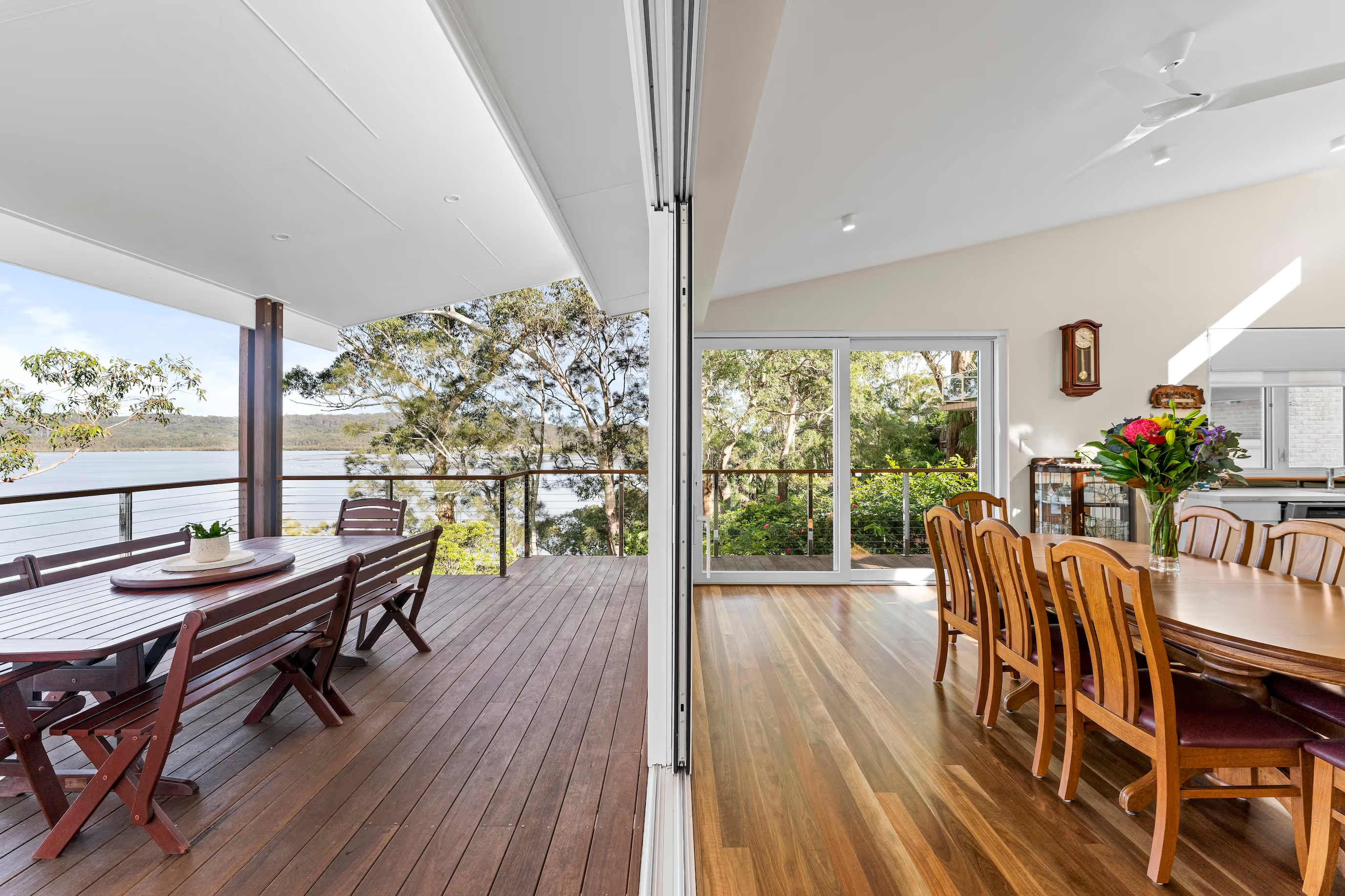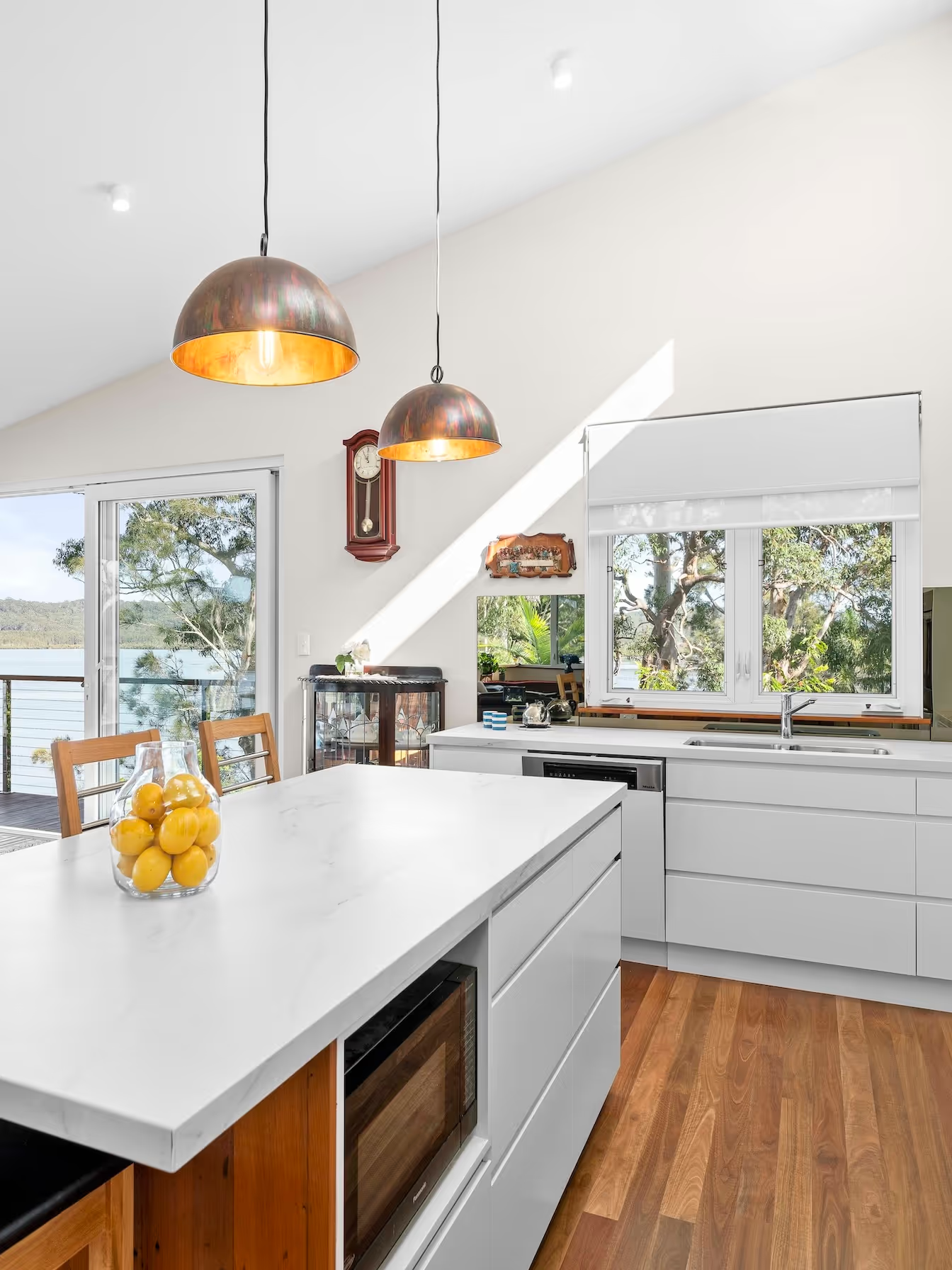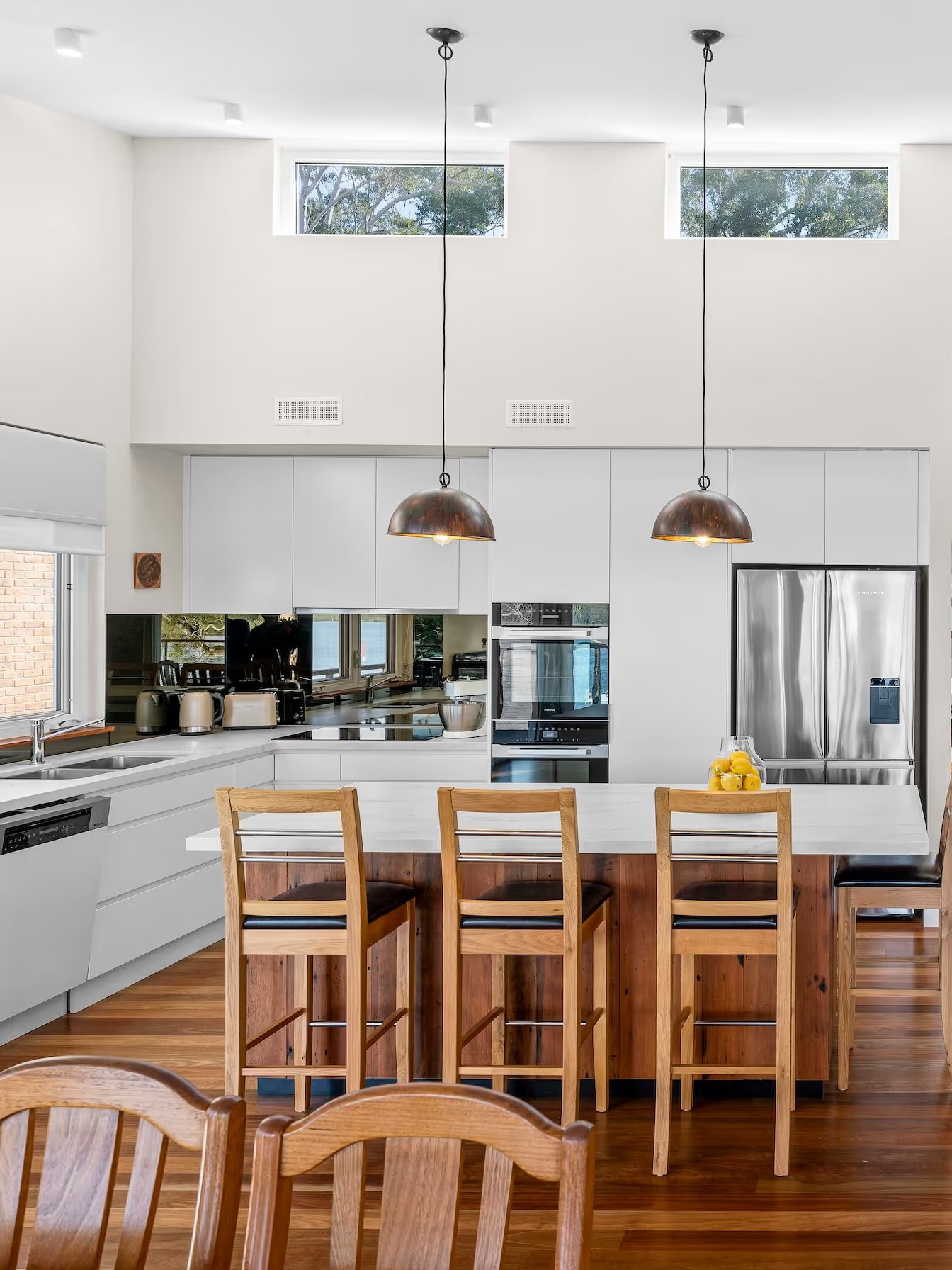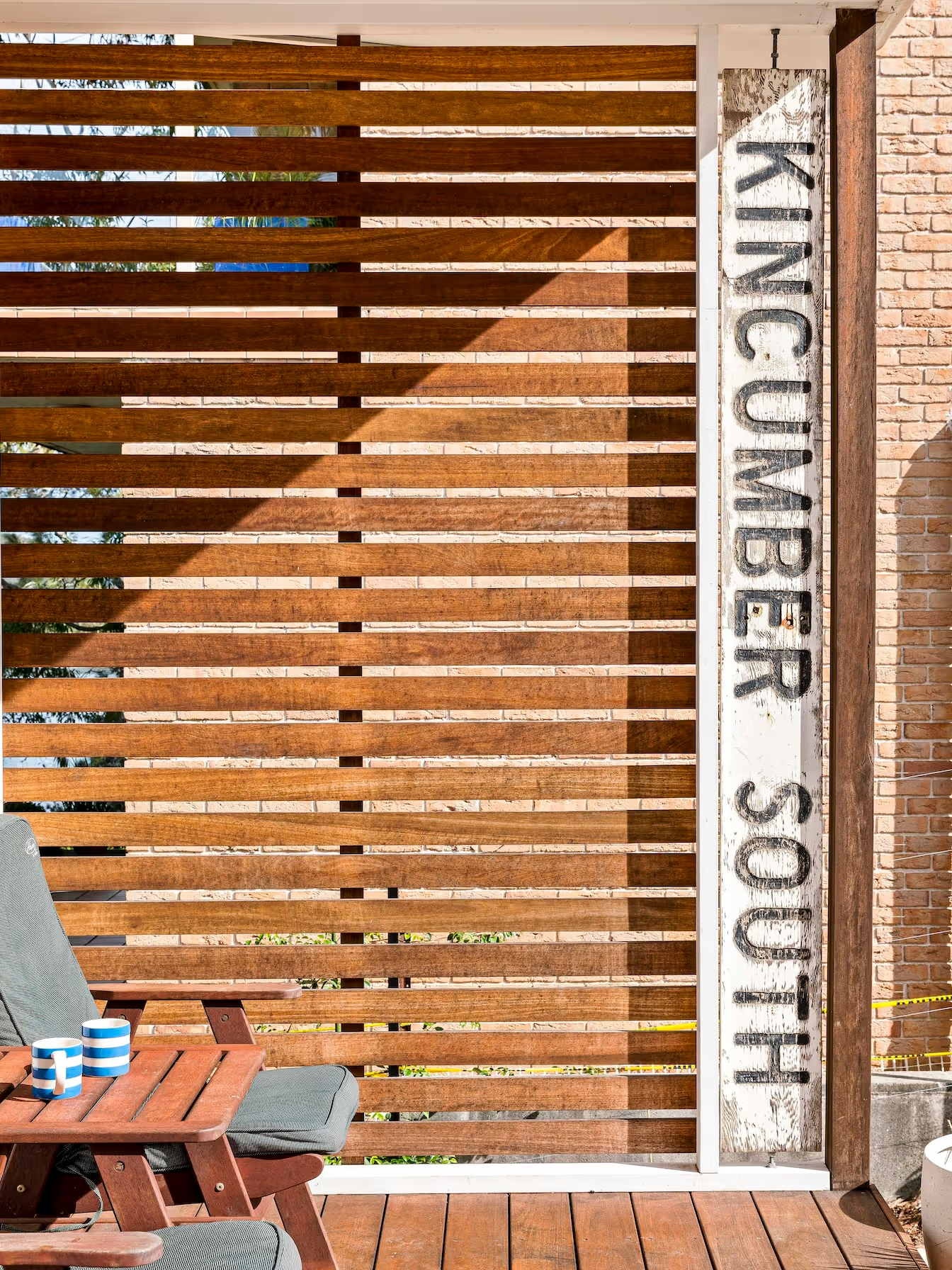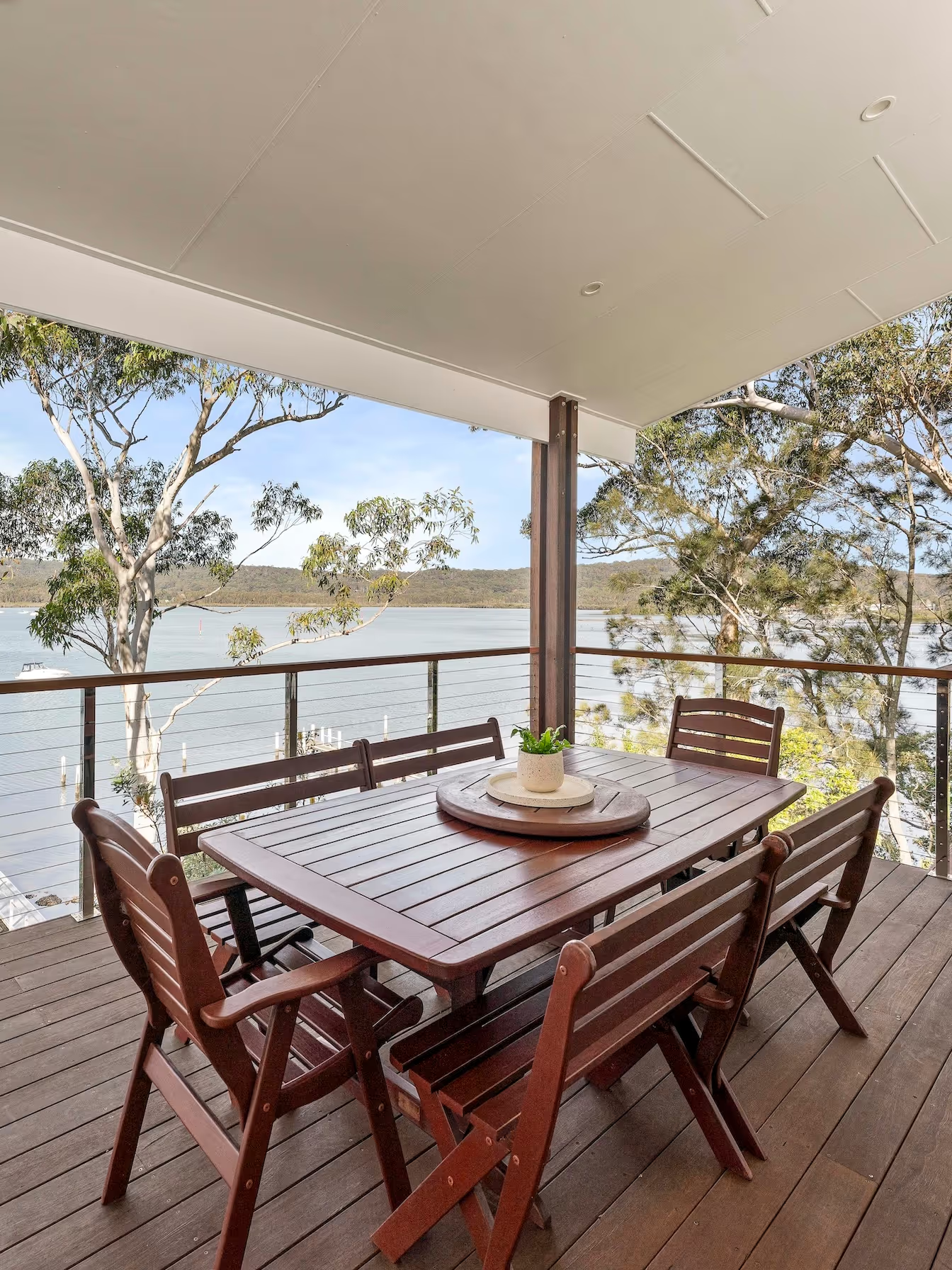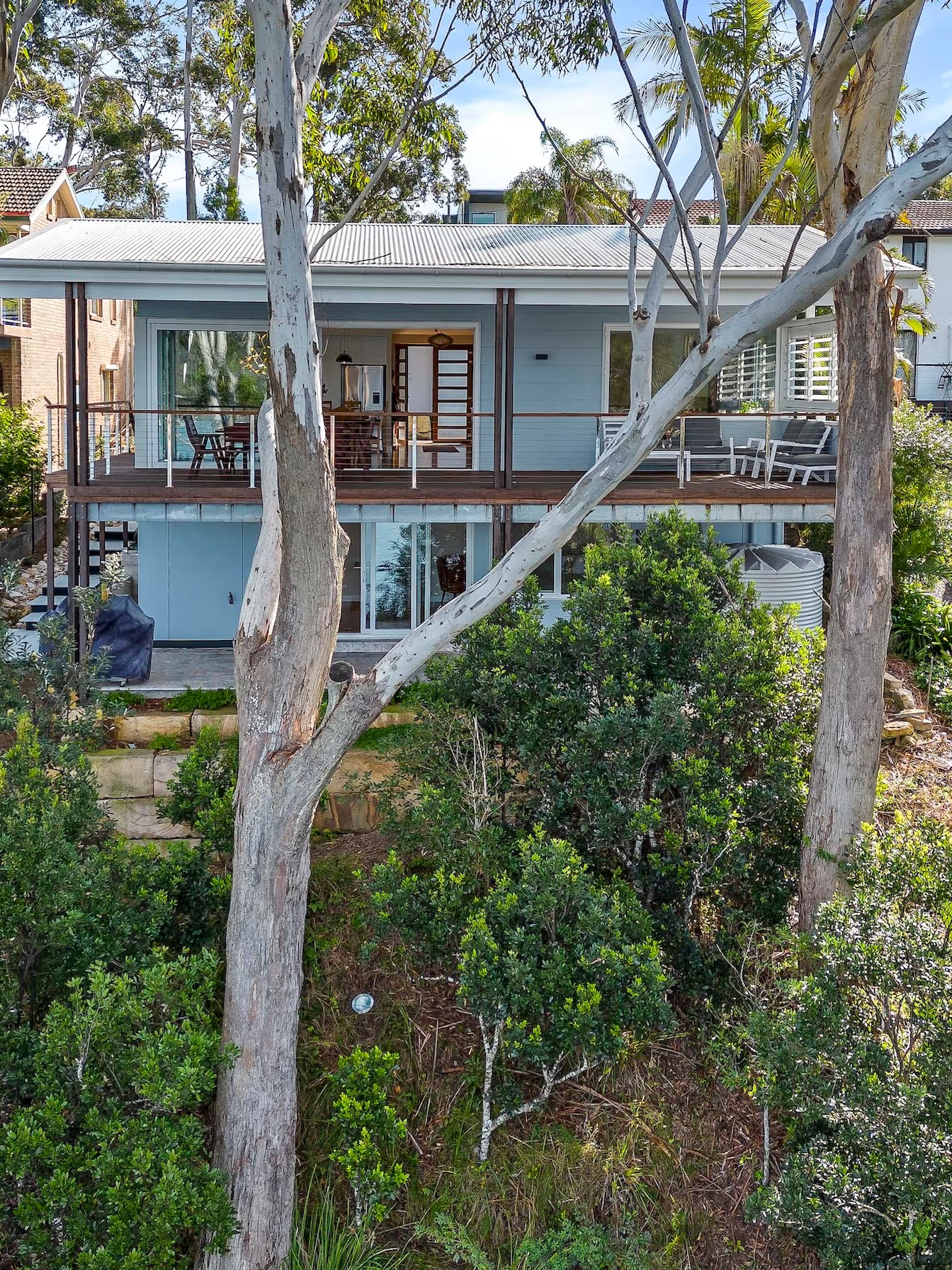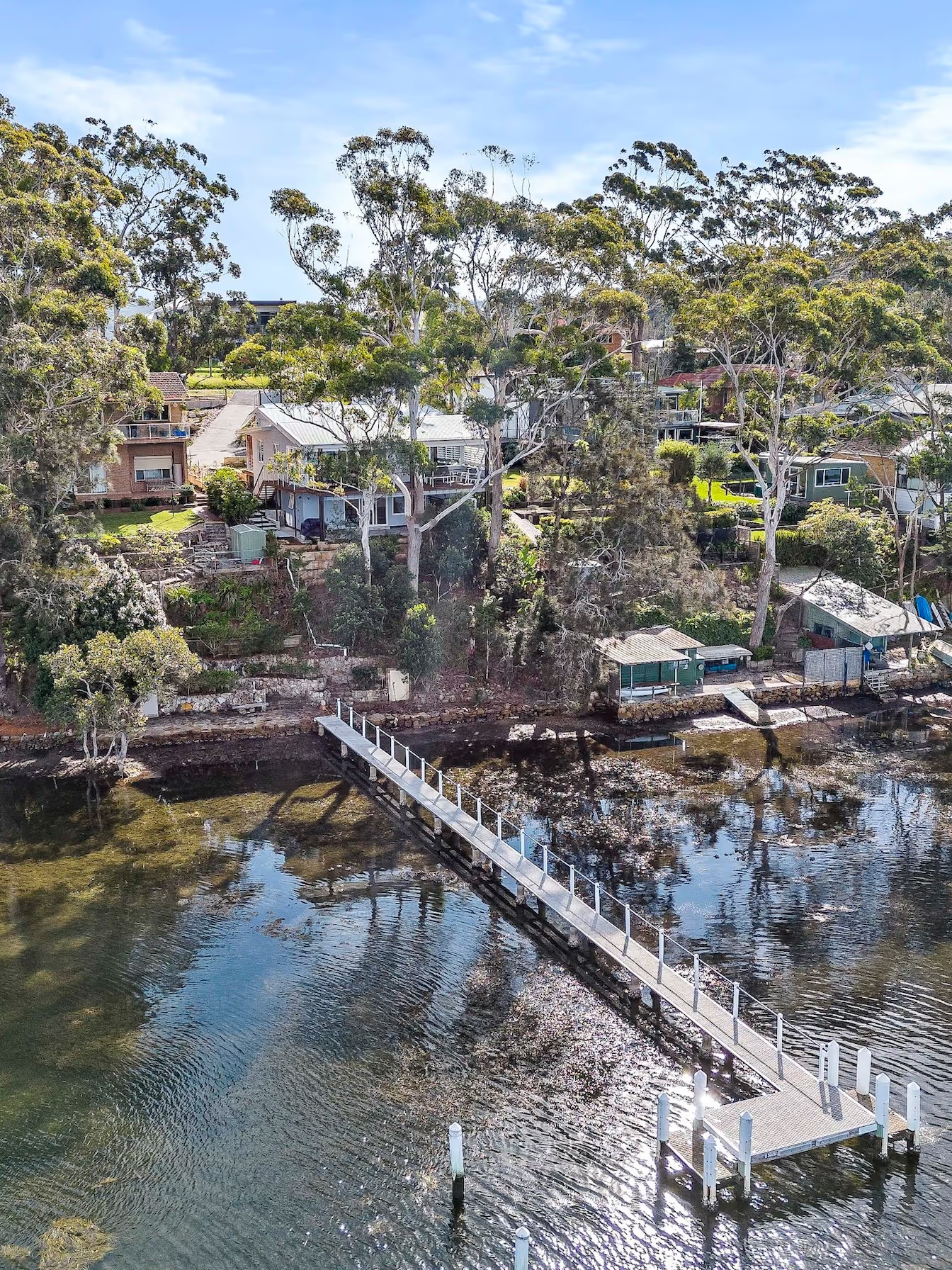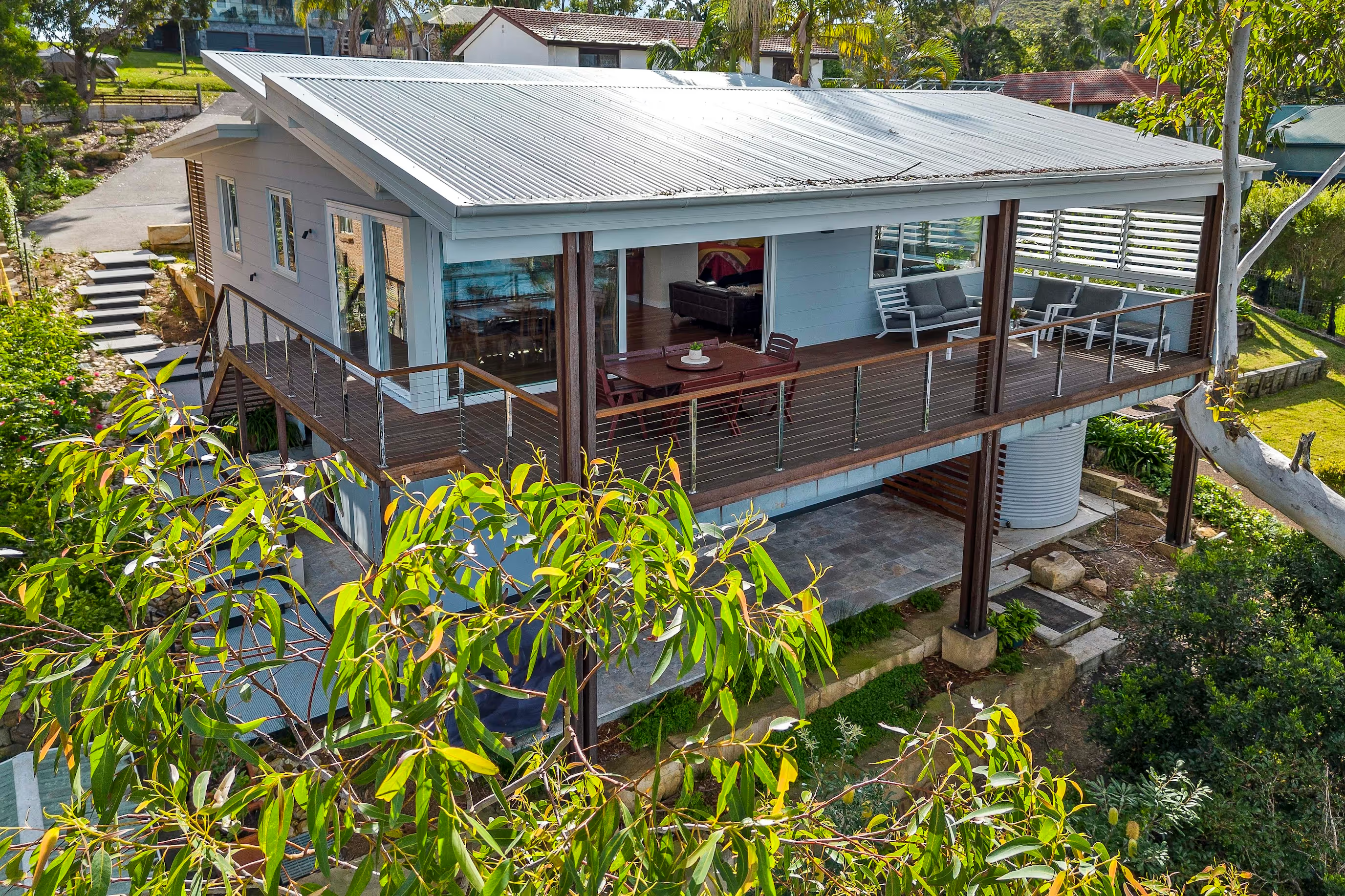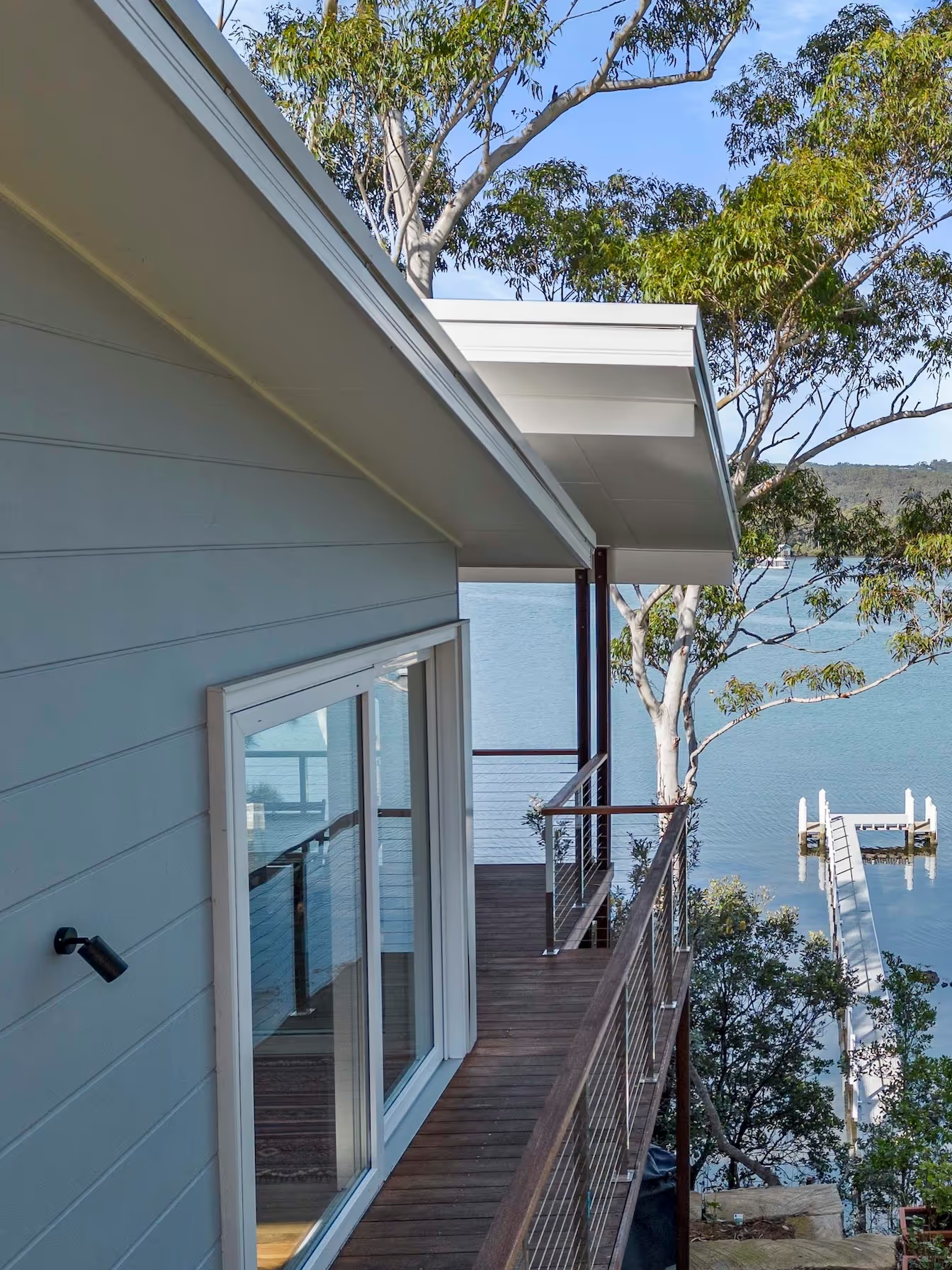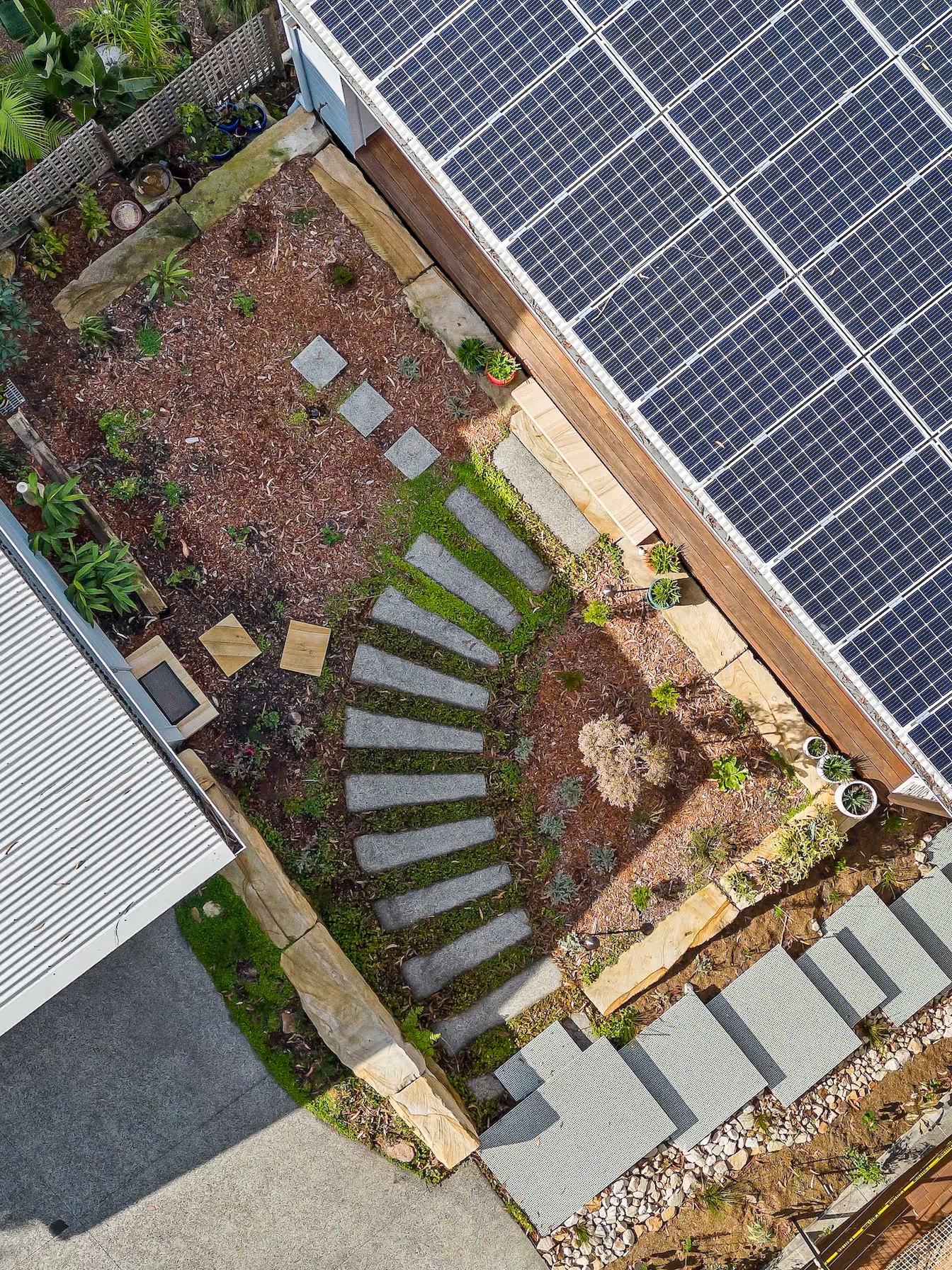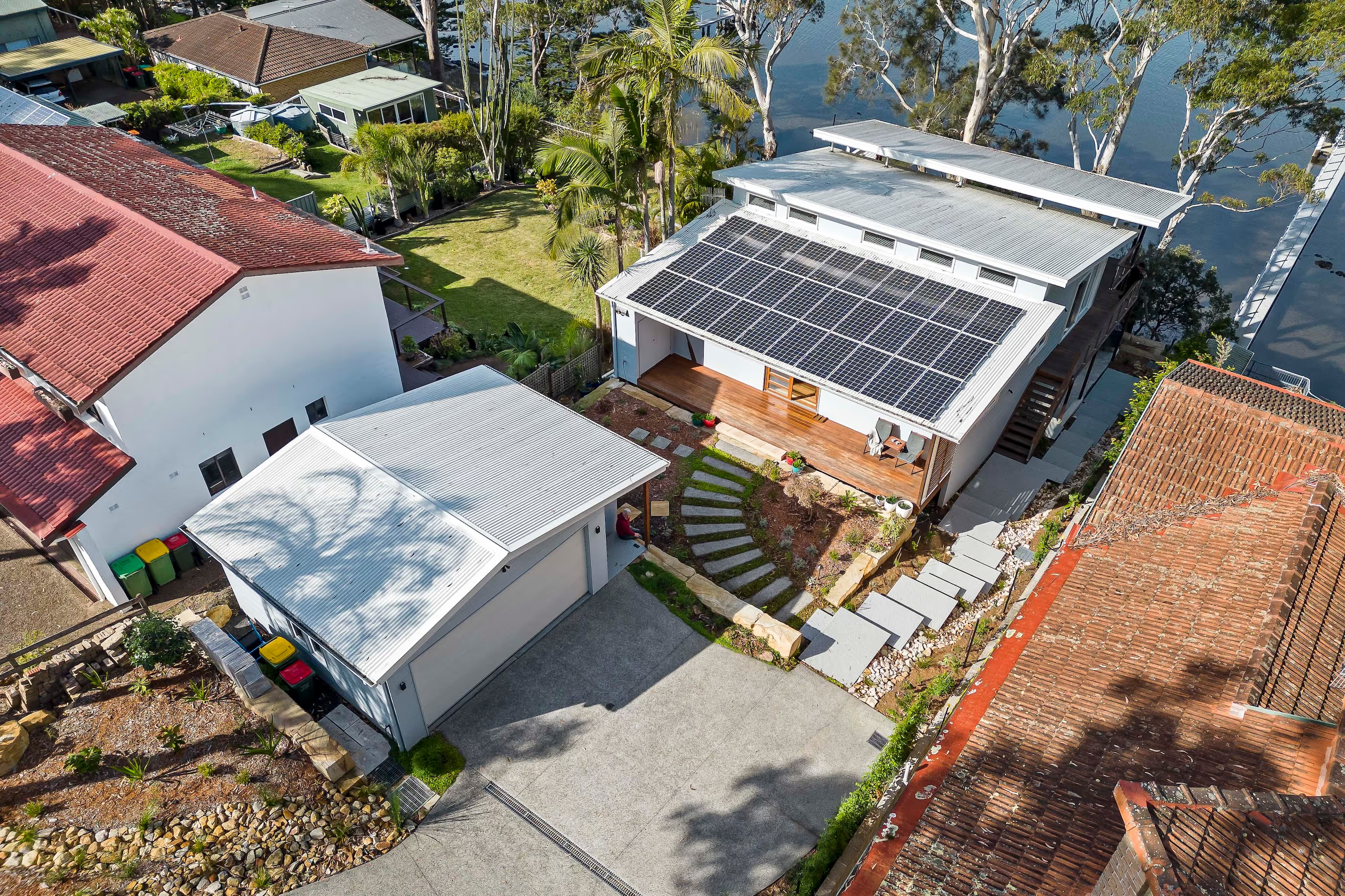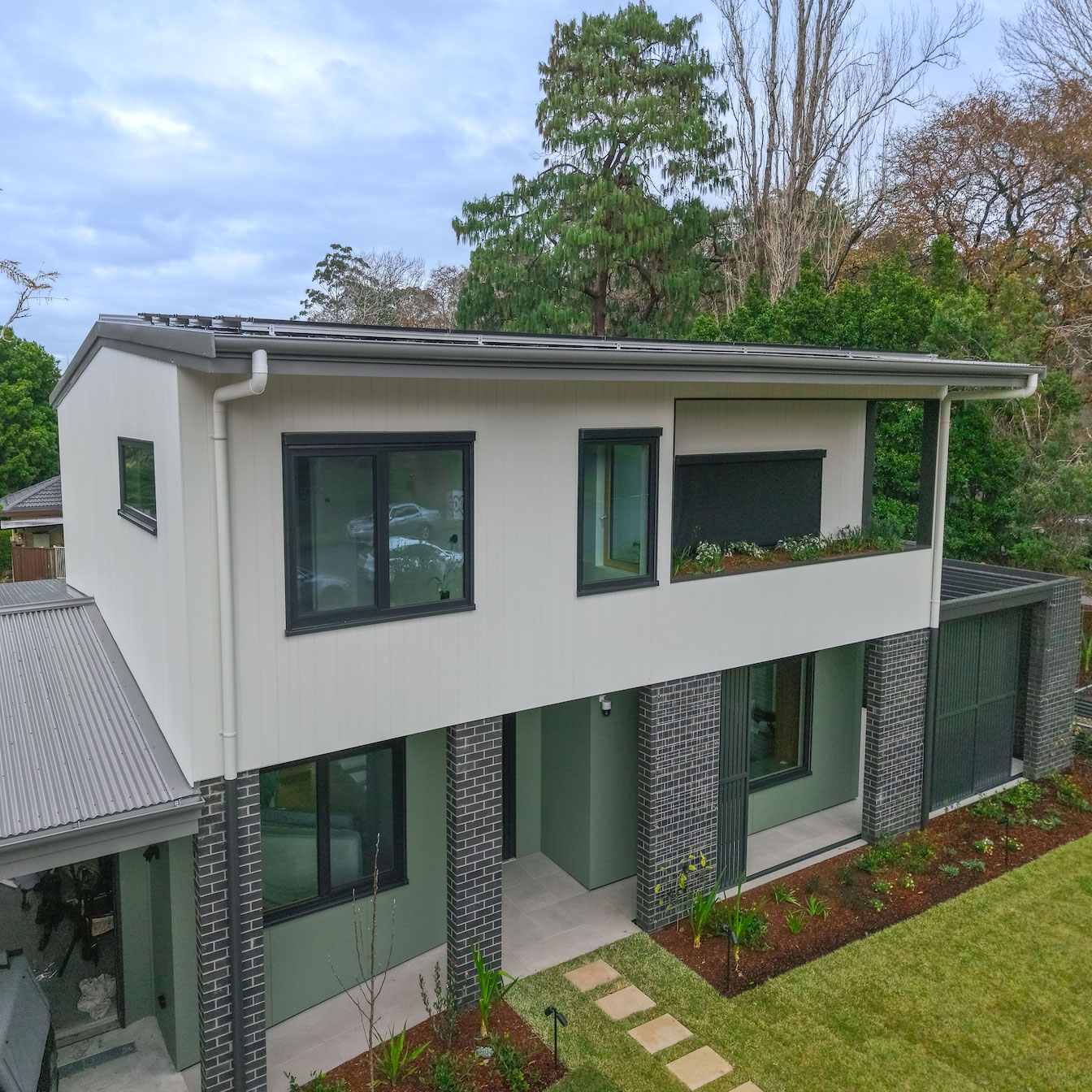
This idyllic house with panoramic ocean views is home for a retired couple whose family had been holidaying here for more than a century.
The original weekender was older still, dismantled in Sydney’s northern suburbs and transported here in 1924. Incorporating materials from the old home was smart from a sustainability point of view but also meaningful for the present and future owners: this is a home that will stay in the family and the material reminders of the old family weekender are welcome.
It’s a glorious site that offers panoramic views over the ocean but the design for the house had to respond to multiple challenges. The views are to the south, which is also the direction of extremely strong winds. Large trees to the north block the winter sun and the site is steep.
A sustainable home was important to the owners and they were encouraged by Envirotecture’s track record and focus. Various options were evaluated before arriving on a new build that is cosy for two people but can gracefully expand to welcome extra family members.
The cottage was designed using Passive House insights and processes, including the vital step of energy modelling in PHPP software, but did not seek certification. The home has excellent levels of insulation, double-glazed uPVC windows, and care was taken to airtight the building envelope to prevent heat or coolth from leaking out. A mechanical ventilation system with heat recovery ensures excellent indoor air quality all year around.
The care taken to source local and environmentally responsible materials is outstanding. Local sandstone was used to build retaining walls. Spotted gum flooring and blackbutt decking are used to beautiful effect. The Weathertex cladding is a virtually maintenance-free product made from timber waste from sustainably harvested Australian hardwood plantations. Recycled hardwood posts support the deck. The house has a grid-tied PV system and harvests rainwaters used to flush toilets and water the extensive gardens. These feature swales to encourage infiltration and eco-sourced natives.
The house is all-electric. Ceiling fans and cross-ventilation provide summer cooling, while clerestory windows shield the home from overheating summer sun. An underfloor hydronic heating system was installed but the heat pump hot water heater to power it has not been purchased to date. The owners discovered that they didn’t need active heating in winter in this mild climate.
